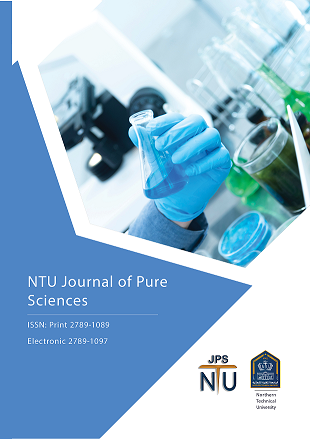Synthesis and characterization of Mn(II),Co(II), Ni(II),Cu(II) ,Ca(II) complexes with the ligand derived from indomethacin
DOI:
https://doi.org/10.56286/ak9nsf81Keywords:
Hydrazone, Transition metal, Indomethacin, ComplexesAbstract
The 2-(1-(4-chlorobenzoyl)-5-methoxy-2-methyl-1H-indol-3-yl)-N'-(4-methylbenzylidene)acetohydrazide ( (IB) was synthesized through the condensation of hydrazide derived from indomethacin with 4-methyl benzaldehyde. Additionally, the complexes obtained from the ligand were characterized by infrared, UV-visible, 1H, 13C NMR spectroscopy, elemental analysis, atomic absorption, molar conductance, and magnetic susceptibility. Measurements have shown that the ligand behaves as a bidentated ligand and is coordinated to the central metal ion through the oxygen atom for the carbonyl group and the nitrogen atom for the azomethine group. The structure of the ligand and complexes was confirmed. With the exception of the copper complex, which has an octahedral geometry, all of the complexes have adopted a tetrahedral geometry.
Downloads
Downloads
Published
Issue
Section
License
Copyright (c) 2024 NTU Journal of Pure Sciences

This work is licensed under a Creative Commons Attribution 4.0 International License.
The journal applies the license of CC BY (a Creative Commons Attribution 4.0 International license). This license allows authors to keep ownership of the copyright of their papers. But this license permits any user to download, print out, extract, reuse, archive, and distribute the article, so long as appropriate credit is given to the authors and the source of the work. The license ensures that the article will be available as widely as possible and that the article can be included in any scientific archive. Creative Commons License This work is licensed under a Creative Commons Attribution 4.0 International License.





